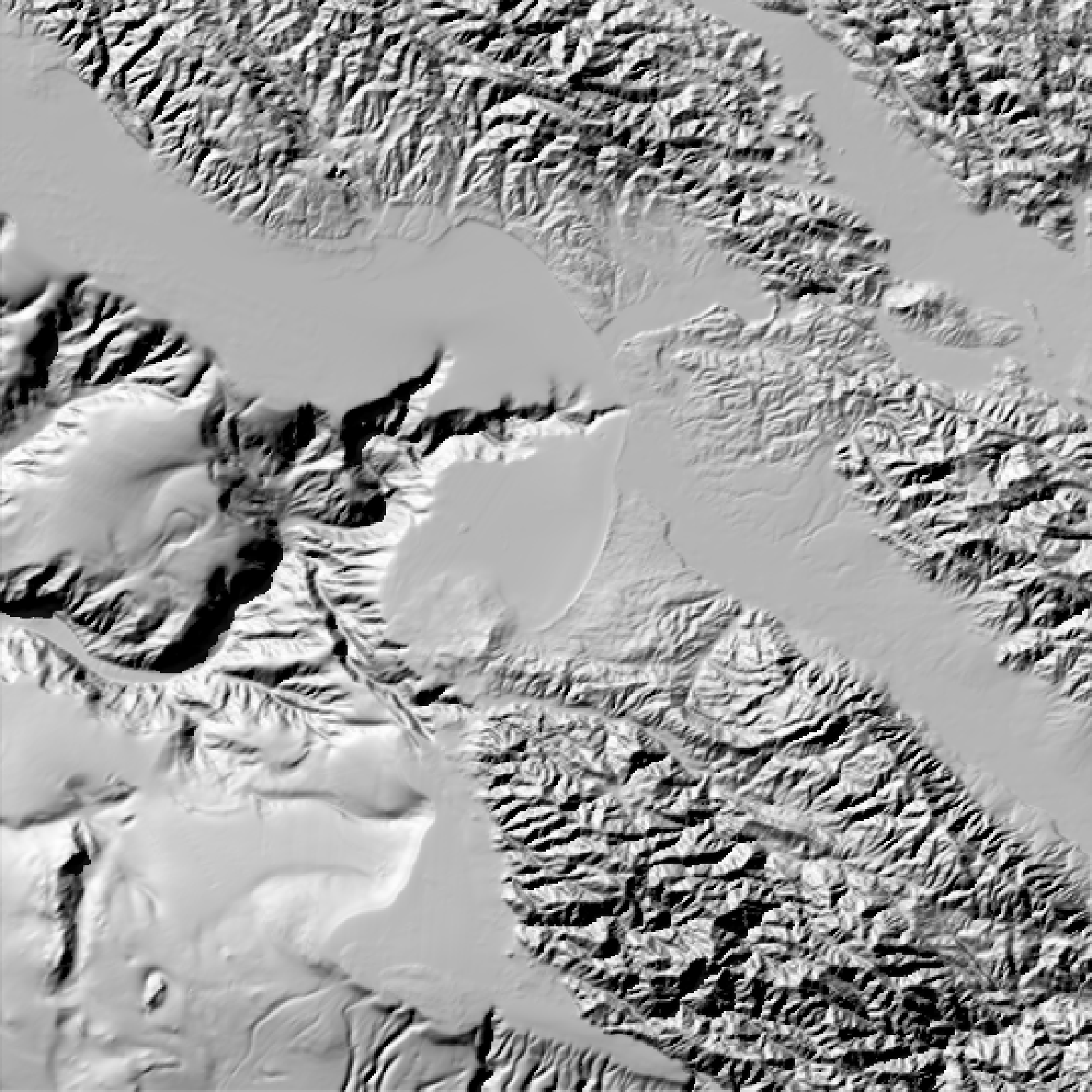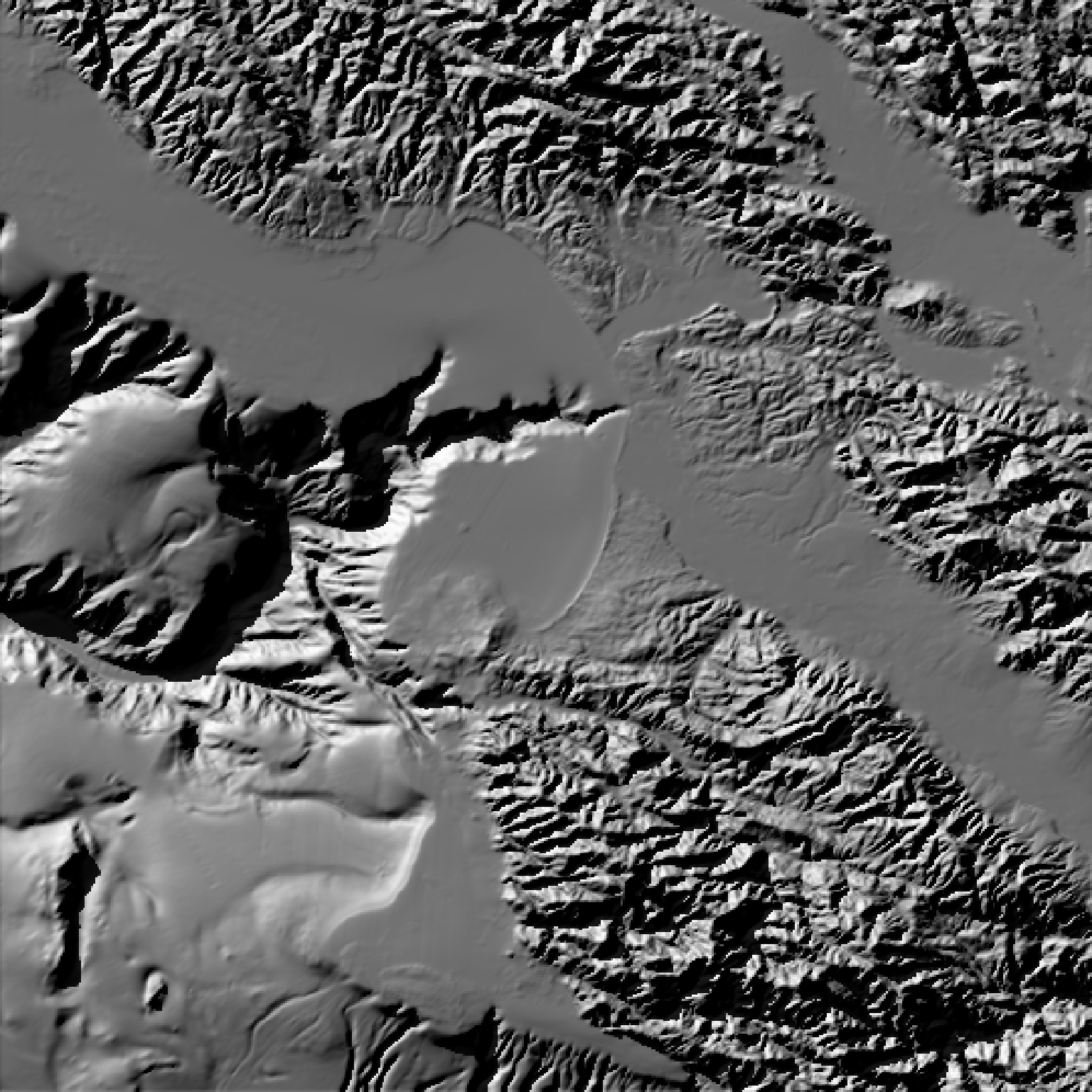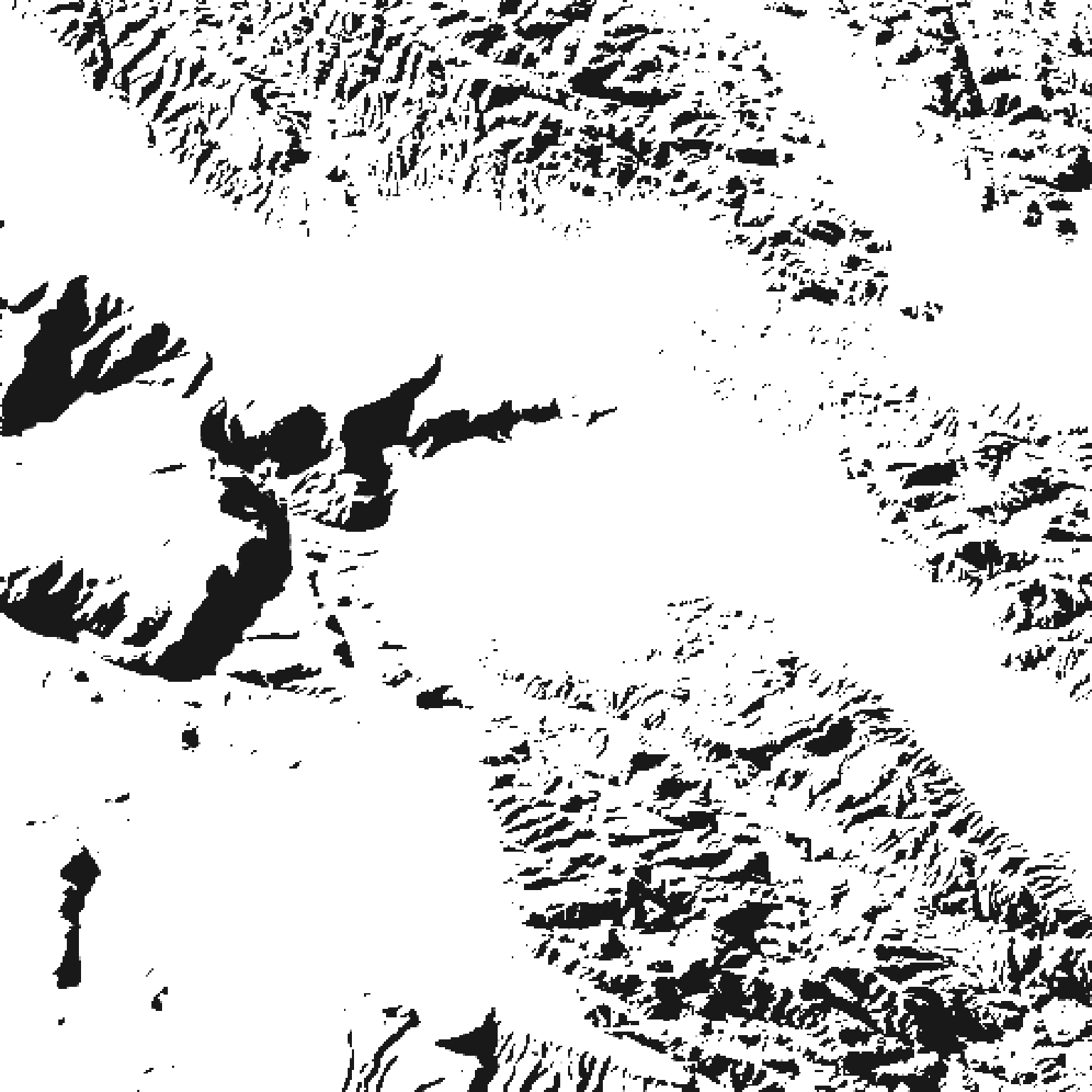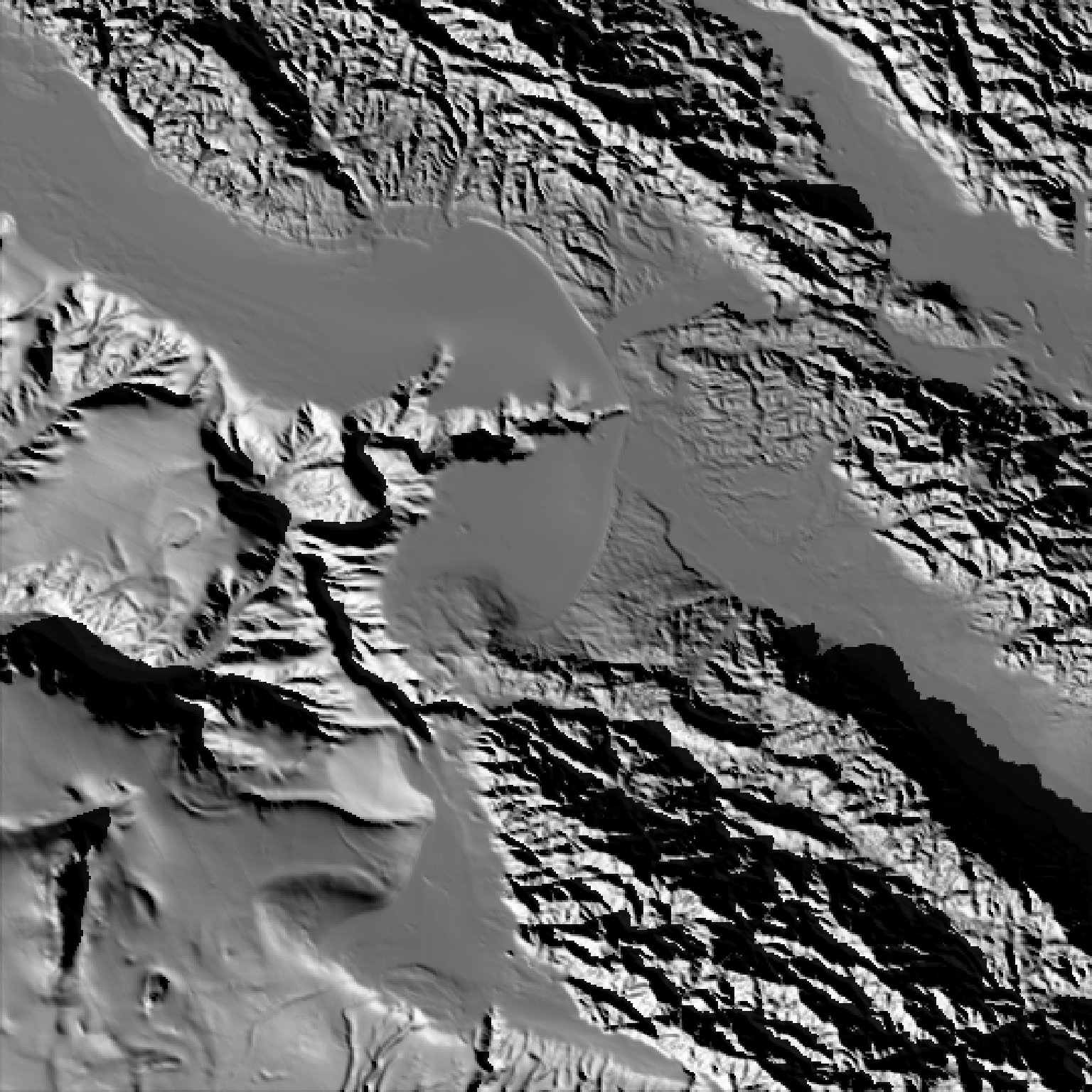Calculates shadow map for a elevation matrix by propogating rays from each matrix point to the light source(s), lowering the brightness at each point for each ray that intersects the surface.
ray_shade(
heightmap,
sunaltitude = 45,
sunangle = 315,
maxsearch = NULL,
lambert = TRUE,
zscale = 1,
multicore = FALSE,
cache_mask = NULL,
shadow_cache = NULL,
progbar = interactive(),
anglebreaks = NULL,
...
)Arguments
- heightmap
A two-dimensional matrix, where each entry in the matrix is the elevation at that point. All points are assumed to be evenly spaced.
- sunaltitude
Default
45. The angle, in degrees (as measured from the horizon) from which the light originates. The width of the light is centered on this value and has an angular extent of 0.533 degrees, which is the angular extent of the sun. Use theanglebreaksargument to create a softer (wider) light. This has a hard minimum/maximum of 0/90 degrees.- sunangle
Default
315(NW). The angle, in degrees, around the matrix from which the light originates. Zero degrees is North, increasing clockwise.- maxsearch
Defaults to the longest possible shadow given the
sunaltitudeandheightmap. Otherwise, this argument specifies the maximum distance that the system should propagate rays to check.- lambert
Default
TRUE. Changes the intensity of the light at each point based proportional to the dot product of the ray direction and the surface normal at that point. Zeros out all values directed away from the ray.- zscale
Default
1. The ratio between the x and y spacing (which are assumed to be equal) and the z axis. For example, if the elevation is in units of meters and the grid values are separated by 10 meters,zscalewould be 10.- multicore
Default
FALSE. IfTRUE, multiple cores will be used to compute the shadow matrix. By default, this uses all cores available, unless the user has setoptions("cores")in which the multicore option will only use that many cores.- cache_mask
Default
NULL. A matrix of 1 and 0s, indicating which points on which the raytracer will operate.- shadow_cache
Default
NULL. The shadow matrix to be updated at the points defined by the argumentcache_mask. If present, this will only compute the raytraced shadows for those points with value1in the mask.- progbar
Default
TRUEif interactive,FALSEotherwise. IfFALSE, turns off progress bar.- anglebreaks
Default
NULL. A vector of angle(s) in degrees (as measured from the horizon) specifying from where the light originates. Use this instead ofsunaltitudeto create a softer shadow by specifying a wider light. E.g.anglebreaks = seq(40,50,by=0.5)creates a light 10 degrees wide, as opposed to the default- ...
Additional arguments to pass to the
makeClusterfunction whenmulticore=TRUE.
Value
Matrix of light intensities at each point.
Examples
#First we ray trace the Monterey Bay dataset.
#The default angle is from 40-50 degrees azimuth, from the north east.
if(run_documentation()) {
montereybay |>
ray_shade(zscale=50) |>
plot_map()
}
 #Change the altitude of the sun to 25 degrees
if(run_documentation()) {
montereybay |>
ray_shade(zscale=50, sunaltitude=25) |>
plot_map()
}
#Change the altitude of the sun to 25 degrees
if(run_documentation()) {
montereybay |>
ray_shade(zscale=50, sunaltitude=25) |>
plot_map()
}
 #Remove the lambertian shading to just calculate shadow intensity.
if(run_documentation()) {
montereybay |>
ray_shade(zscale=50, sunaltitude=25, lambert=FALSE) |>
plot_map()
}
#Remove the lambertian shading to just calculate shadow intensity.
if(run_documentation()) {
montereybay |>
ray_shade(zscale=50, sunaltitude=25, lambert=FALSE) |>
plot_map()
}
 #Change the direction of the sun to the South East
if(run_documentation()) {
montereybay |>
ray_shade(zscale=50, sunaltitude=25, sunangle=225) |>
plot_map()
}
#Change the direction of the sun to the South East
if(run_documentation()) {
montereybay |>
ray_shade(zscale=50, sunaltitude=25, sunangle=225) |>
plot_map()
}
